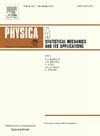在高级驾驶员辅助系统(ADAS)车辆的跟车模型中提高驾驶员的注意力和超车效率
IF 2.8
3区 物理与天体物理
Q2 PHYSICS, MULTIDISCIPLINARY
Physica A: Statistical Mechanics and its Applications
Pub Date : 2024-11-22
DOI:10.1016/j.physa.2024.130207
引用次数: 0
摘要
在当代技术领域,配备高级驾驶员辅助系统(ADAS)的汽车有望显著提高当前交通系统的效率和交通容量。ADAS 车辆的前进和后退效率可用于决定车辆在任何时候的最佳速度和加速度。为了理解驾驶员的注意力和超车如何影响车辆和附近车辆的速度,我们为高级驾驶辅助系统车辆开发了一个新颖的汽车跟随模型,以深入了解这一现象。为了研究稳定性标准,对稳定性条件进行了 "线性和非线性 "分析。对小的车速扰动进行了模拟,发现不同参数值下的模拟车速曲线模式(无拥堵、扭结和混乱)与理论结果相似。研究发现,较小的通过量值会通过降低扭结波的波长和振幅而导致扭结区域的出现,而较高的通过量值则会观察到混乱模式。交通稳定性与最佳速度的后向信息(前一辆车的车头距离)权重成反比。此外,与最佳速度的通过信息和后向信息因素相比,驾驶员对附近车辆平均速度的关注是对交通稳定影响最大的因素。驾驶员注意力的集中与 ADAS 车辆驾驶员的通过行为相结合,会产生复合影响,从而影响通常的驾驶模式。因此,改进后的模型可以作为主动安全技术来实施,以减少碰撞事故和其他交通相关问题。本文章由计算机程序翻译,如有差异,请以英文原文为准。
Enhancing driver’s attention and overtaking efficiency in car-following model for Advanced Driver Assistance Systems (ADAS) vehicles
In the contemporary technological landscape, vehicles equipped with Advanced Driver Assistance Systems (ADAS) are expected to significantly enhance current transportation systems’ efficiency and traffic capacity. The efficiency of ADAS vehicles to have forward and backward headway is utilized in deciding a vehicle’s optimal velocity and acceleration at any time. The comprehension of nearby vehicle information plays a crucial role in anticipating traffic flow behavior, with particular effectiveness observed during overtaking maneuvers.
To comprehend how driver attention and passing can influence the velocity of the vehicle and those near, a novel car-following model is developed for Advanced Driving Assistance Systems vehicles to gain deeper insights into this phenomenon. To study the stability criterion, both “linear and nonlinear” analyses are performed for the stability conditions. A simulation for small perturbations in headway was done, and it was found that the simulated headway profile patterns (No Jam, Kink and Chaotic) for different parameter values resemble with the theoretical results. It is found that the smaller values of passing lead to the kink region by reducing the wavelength and amplitude of the kink wave, whereas a chaotic pattern is observed for higher values of passing. Traffic stability is discovered to be inversely supported by the weightage to the backward information (the headway of the preceding vehicle) for optimal velocity. Moreover, compared to the passing and backward information factors of optimal velocity, the driver’s attention on average speed of nearby vehicles is the most influential factor in stabilizing traffic. The combination of the concentration of the driver’s attention and the passing actions of drivers in ADAS vehicles have a compounding impact that affects usual driving patterns. Therefore, the improved model can be implemented as active safety technology to reduce collision accidents and other traffic-related issues.
求助全文
通过发布文献求助,成功后即可免费获取论文全文。
去求助
来源期刊
CiteScore
7.20
自引率
9.10%
发文量
852
审稿时长
6.6 months
期刊介绍:
Physica A: Statistical Mechanics and its Applications
Recognized by the European Physical Society
Physica A publishes research in the field of statistical mechanics and its applications.
Statistical mechanics sets out to explain the behaviour of macroscopic systems by studying the statistical properties of their microscopic constituents.
Applications of the techniques of statistical mechanics are widespread, and include: applications to physical systems such as solids, liquids and gases; applications to chemical and biological systems (colloids, interfaces, complex fluids, polymers and biopolymers, cell physics); and other interdisciplinary applications to for instance biological, economical and sociological systems.

 求助内容:
求助内容: 应助结果提醒方式:
应助结果提醒方式:


